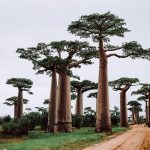Kalahari Melon (Citrullus lanatus [watermelon] seed) Oil
| PRODUCT INCI NAME | Kalahari Melon (Citrullus lanatus [watermelon] seed) Oil |
| PLACE OF ORIGIN | Namibia |
| EXTRACTION METHOD | Cold or Screw press |
| PART OF PLANT | Seeds |
| CAS number | 90244-99-8 |
| EC number | 290-802-9 |

KALAHARI MELON SEED OIL PROPERTIES
Kalahari Melon seed oil is the golden oil of Southern Africa. The Kalahari melon is highly adapted to surviving drought and the harsh light of the desert environment. Although found all over Southern Africa, it is most closely associated with the Kalahari sands of Namibia, Botswana, south-western Zambia and western Zimbabwe. It belongs to the botanical family of Cucurbitaceae.
The oil is colourless to very light yellow-green colour with a very subtle neutral odour.
Archaeological evidence suggests that the Kalahari melon has been used for over 4000 years. The San (Bushman) use the melon seed oil to moisturize their skin and encourage hair growth, while the pulp mixed with water is used as a sunblock. The rich yellow oil of Kalahari melon seeds has been used traditionally in Southern Africa as an ingredient in soap.
Oil Composition
Kalahari Melon Oil is a superb antioxidant, noncomedogenic, restorative skin care oil. Wildcrafted virgin cold pressed sun-dried seeds from small Citrullus lanatus watermelons are rich with Omega 3, 6, and 9 fatty acids. It has great moisturizing, regenerating, and restructuring properties, thanks to its high content of essential fatty acids (50 to 70% linoleic acid), which are not synthesized by the body. They contribute to the integrity of the cell wall and the suppleness and beauty of the skin. Kalahari Melon plays a role in regulating the hydration and restructuring the epidermis.
Kalahari melon seed oil has similar levels of omega-6 essential fatty acid (68%) to evening primrose (72%), assuring anti-inflammatory properties, restoring skin elasticity and combating wrinkles. Because it dissolves excess sebum this oil is perfect for acne and blemish prone skin types. It is a good baby oil and can be used as a carrier oil. Lightweight yet highly moisturizing and emollient, Kalahari Melon Seed oil penetrates quickly leaving no greasy feel.
Kalahari melon oil contains a high level of y-tocopherol (70.56 mg/100g), followed by α-tocopherol (25.94 mg/100g), which provide antioxidant properties as well as a reasonably good shelf life.
Typical Properties
| Acid Value | <5 mg KOH/g |
| Peroxide value | <7.5 meqO2/kg |
| Specific gravity (20C°) | 0.919-0.930 |
| Refractive Index | 1.463–1.475 |
| Iodine value | 120 - 130 I2/100g |
| Saponification value | 180 - 200mg KOH/kg |
Fatty Acid Composition (Range of values)
| Saturated fatty acids | Unsaturated fatty acids | ||
| Palmitic acid (C16:0) | 8-13% | Oleic acid (omega 9) (C18:1) | 10-29% |
| Stearic acid (C18:0) | 5-11% | Linoleic acid (omega 6) (C18:2) | 55-70% |
| α-linolenic acid (omega 3) (C18:3) | < 2% |
![]() Specification
Specification
| Acid Value | <3 mg KOH/g |
| Peroxide Value | <5 mEq/kg |
| Eschericia coli | Not detected |
| Mould | < 10 cfu/g |
| Yeast | < 10 cfu/g |
KALAHARI MELON SEED OIL PROPERTIES
Kalahari Melon seed oil is the golden oil of Southern Africa. The Kalahari melon is highly adapted to surviving drought and the harsh light of the desert environment. Although found all over Southern Africa, it is most closely associated with the Kalahari sands of Namibia, Botswana, south-western Zambia and western Zimbabwe. It belongs to the botanical family of Cucurbitaceae.
The oil is colourless to very light yellow-green colour with a very subtle neutral odour.
Archaeological evidence suggests that the Kalahari melon has been used for over 4000 years. The San (Bushman) use the melon seed oil to moisturize their skin and encourage hair growth, while the pulp mixed with water is used as a sunblock. The rich yellow oil of Kalahari melon seeds has been used traditionally in Southern Africa as an ingredient in soap.
Oil Composition
Kalahari Melon Oil is a superb antioxidant, noncomedogenic, restorative skin care oil. Wildcrafted virgin cold pressed sun-dried seeds from small Citrullus lanatus watermelons are rich with Omega 3, 6, and 9 fatty acids. It has great moisturizing, regenerating, and restructuring properties, thanks to its high content of essential fatty acids (50 to 70% linoleic acid), which are not synthesized by the body. They contribute to the integrity of the cell wall and the suppleness and beauty of the skin. Kalahari Melon plays a role in regulating the hydration and restructuring the epidermis.
Kalahari melon seed oil has similar levels of omega-6 essential fatty acid (68%) to evening primrose (72%), assuring anti-inflammatory properties, restoring skin elasticity and combating wrinkles. Because it dissolves excess sebum this oil is perfect for acne and blemish prone skin types. It is a good baby oil and can be used as a carrier oil. Lightweight yet highly moisturizing and emollient, Kalahari Melon Seed oil penetrates quickly leaving no greasy feel.
Kalahari melon oil contains a high level of y-tocopherol (70.56 mg/100g), followed by α-tocopherol (25.94 mg/100g), which provide antioxidant properties as well as a reasonably good shelf life.
- Excellent for all skin types, particularly suited to sensitive skin, because of the high Linoleic acid content (Can be used to replace commercial baby oil)
- Promotes the rejuvenation and repair of skin cells
- Hair:
- Emollient oil for dry, damaged, and fragile hair
- Does not clog hair follicles and can extend colour protection
- It is much less greasy; perhaps even the most grease-free oil option
- Lips: Ingredient for lip balms, lipsticks, and other lip care products
- Aromatherapy: Great as a carrier for aromatherapy formulas
Can replace Olive, Argan, Coconut and Almond Oil
| Kalahari Melon oil | Argan oil | Almond Oil | Coconut Oil | |
| Oleic acid (omega 9) | 10 - 29% | 43 - 50% | 62 - 86% | 5 - 8% |
| Linoleic acid (omega 6) | 55 - 70% | 29 - 37% | 7 - 30% | 7 - 20% |
| α-linolenic acid (omega 3) | ≤ 2% | ≤ 0.3% | ≤ 0.2% | ≤ 2% |
| Palmitic acid | 8 - 13% | 12 - 13% | 4 - 9% | 8 - 11% |
| Saponification value (mg KOH/kg) | 180 - 200 | 180 - 200 | 190 - 200 | 250 - 264 |
Linoleic acid (omega-6, which your body does not naturally produce) vs. Oleic acid (omega-9, a monounsaturated fatty acid): Linoleic acid is lightweight and thinner than oleic acid, which means it is able to be absorbed by the skin more easily. Because individuals with acneic skin generally have lower levels of linoleic versus oleic acid in their sebum, linoleic acid can help address acne. This means that oils with higher percentages of linoleic acid are beneficial in controlling acne.
Oleic acid is thicker and feels rich, benefitting those with dry or aging skin. Oils high in linoleic and lower in oleic acids are considered “drying” oils, meaning they absorb quickly into the skin, and are extremely beneficial for all skin types – including oily, and of course acne.
Oils high in oleic and low in linoleic acids are heavier than high linoleic oils and take longer to absorb. They can cause breakouts and lead to dry, oily, or combination skin with extended use.
The fatty acids omega-3s and omega-6s are the building blocks of healthy cell membranes. These polyunsaturated fats also help produce the skin’s natural oil barrier, critical in keeping skin hydrated, plumper, and younger looking.
Palmitic acid can act as an emollient, softening the skin and help retain moisture by forming an occlusive layer. Two main functions of palmitic acid are to act as an emulsifier and
surfactant. The low surface tension of palmitic acid allows water to combine with the oil and dirt molecules and wash them away. As a result, palmitic acid helps to remove dirt, sweat, and excess sebum from the skin and hair. This makes it a useful ingredient in cleansers, body washes, shampoos, and bar soaps.
Saponification value number represents the number of milligrams of potassium hydroxide required to saponify 1g of fat under the conditions specified. It is a measure of the average molecular weight of all the fatty acids present. Saponification value refers to the amount of esters that can be hydrolysed and turned into soap.
HEALTH AND SAFETY AND NON-GMO STATEMENT
- Ionization: Product did not undergo any ionizing treatment & does not contain any ingredient/additive treated by ionization.
- Pesticides: Product conforms with regulation 396/2005 EC and its last amendments.
- Heavy Metals: Product conforms with regulation 1881/2006 EC and its last amendments.
- Non-GMO: Raw materials were not subject to any Genetic Modifications.
Contact Us
Please fill in the form below and press send. One of our sales agents will be in touch with you to discuss the specifics and take your full order.





